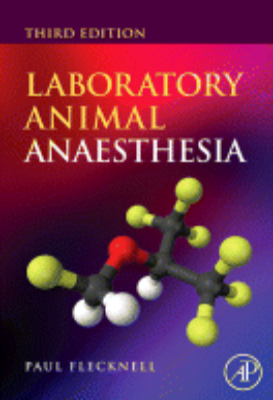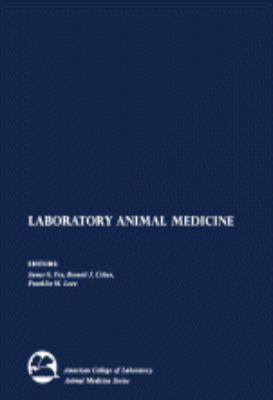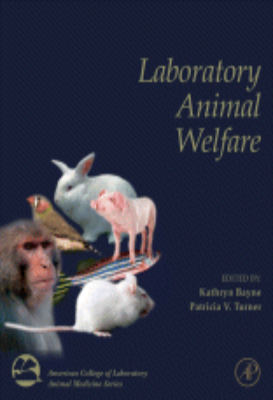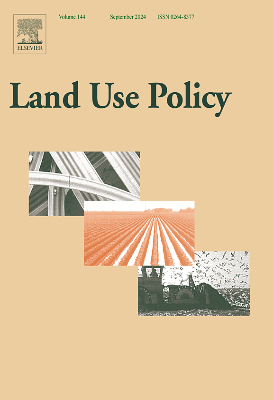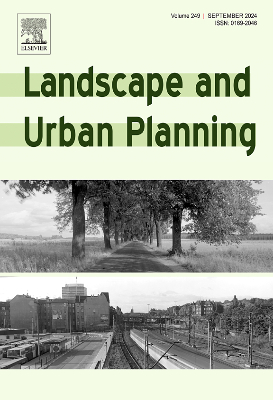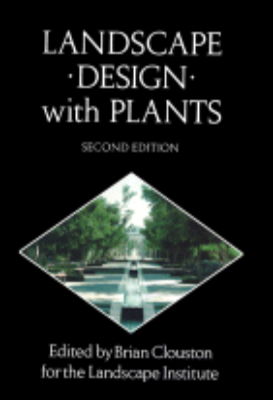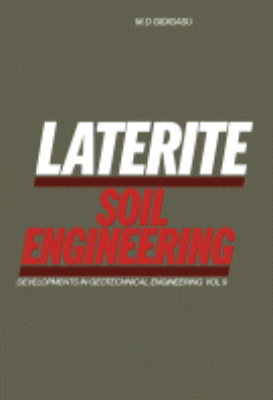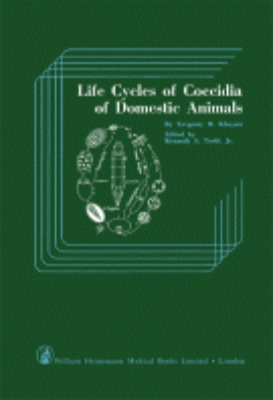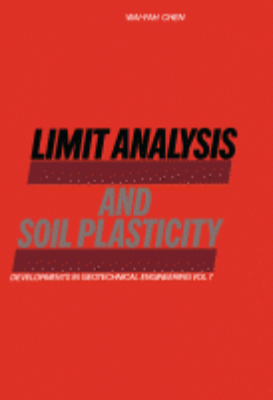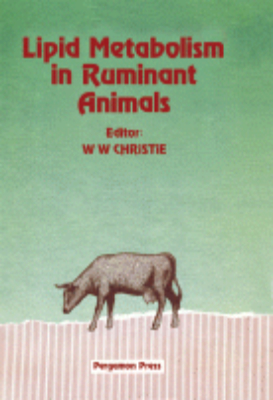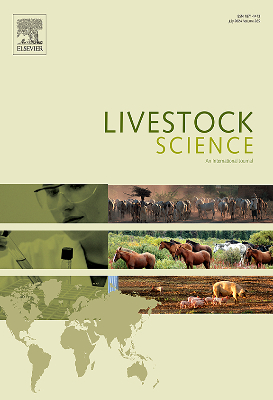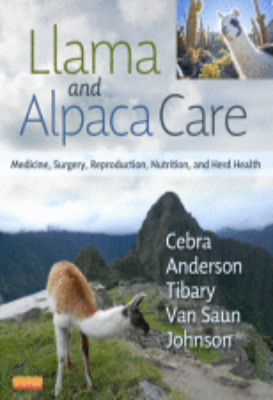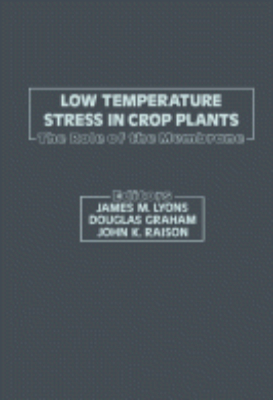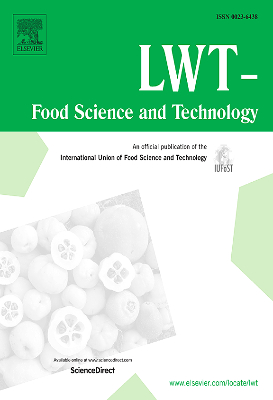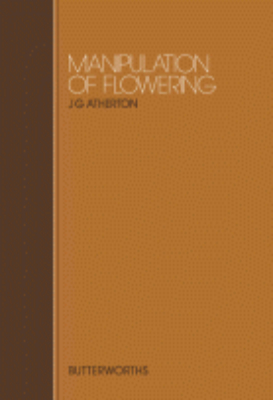Agricultural Science
Laboratory Animal Anaesthesia: Second Edition 1996
The use of safe and effective anaesthetic techniques can have a major influence both on the welfare of laboratory animals and the quality of the research results obtained in using them. In times of justified public and scientific concerns over such issues, the need for clear and concise advise on good technique is of paramount importance.However, much anaesthetic work in the laboratory is carried out by research workers and support staff who have not benefited from specialist veterinary training. This second edition of Paul Flecknell's invaluable guide gives just the sort of clear concise practical information such people need. It follows all the key stages from preoperative care thorough anesthesia itself to the post - anaesthetic recovery period.Following these general sections, there are specific instructions on regimes for particular laboratory animals, with advice on recommended agents, dosages and special procedures of importance. Particular emphasis is placed on welfare, pain reduction and proper post - procedural care.The Second Edition of this now standard guide adds the results of the latest research, most effective anesthetics and useful illustrations of procedures and equipment and broadens the original book's coverage to include notes on fish, amphibia, reptiles and birds.It will prove an essential addition to the library of any laboratory where animals are used for research.
Laboratory Animal Anaesthesia: Third Edition 2009
Laboratory Animal Anesthesia looks at recent significant developments in anesthetic practices in laboratory experiments involving animals. It also provides information about basic standards for proper use of anesthesia. In addition, it examines the equipment and different anesthetic agents that are used in performing an experiment on animals. The book also discusses the profound effects of anesthesia on the physiological aspect of the animals body systems, such as hypothermia and respiratory depression. The book addresses the proper management and care that should be provided for the animals that undergo anesthesia. Furthermore, it covers different anesthetic procedures that should be used on various kinds of small animals intended for laboratory experiments. The main goal of this book is to provide information about the different anesthetic agents used in experiments, and the proper standards to follow when using anesthetics on lab animals. Key Features New edition provides new information on anesthesia and analgesia, and has an extensively revised and updated bibliography Provides a balanced consideration of the needs of scientific research and the welfare of laboratory animals Written by a veterinary anesthetist and scientist with over 30 years' experience in the field, and who is actively engaged in research in this area Provides rapid, easily accessed information using tabulated summaries Provides those with limited experience of anesthesia with the information they need to carry our procedures effectively, safely, and humanely Provides sufficient depth for the more experienced anesthetist moving to this field
Laboratory Animal Medicine: 1984
Laboratory Animal Medicine is a compilation of papers that deals with the diseases and biology of major species of animals used in medical research. The book discusses animal medicine, experimental methods and techniques, design and management of animal facilities, and legislation on laboratory animals. Several papers discuss the biology and diseases of mice, hamsters, guinea pigs, and rabbits. Another paper addresses the dog and cat as laboratory animals, including sourcing of these animals, housing, feeding, and their nutritional needs, as well as breeding and colony management. The book also describes ungulates as laboratory animals, including topics on sourcing, husbandry, preventive medical treatments, and housing facilities. One paper addresses primates as test animals, covering the biology and diseases of old world primates, Cebidae, and ferrets. Some papers pertain to the treatment, diseases, and needed facilities for birds, amphibians, and fish. Other papers then deal with techniques of experimentation, anesthesia, euthanasia, and some factors (spontaneous diseases) that complicate animal research. The text can prove helpful for scientists, clinical assistants, and researchers whose work involves laboratory animals.
Laboratory Animal Medicine: Second Edition 2002
A volume in theAmerican College of Laboratory Animal Medicineseries, this second edition has over 40% new material, including the addition of six new topics and many others that are completely rewritten. The book comprehensively covers the biological and disease aspects of laboratory animal medicine while examining other aspects such as the biohazards associated with the use of animal experimentation and factors complicating the bioethics of animal research.
Laboratory Animal Medicine: Third Edition 2015
"Laboratory Animal Medicine, Third Edition, is a fully revised publication from the American College of Laboratory Medicines acclaimed blue book series. It presents an up-to-date volume that offers the most thorough coverage of the biology, health, and care of laboratory animals. The book is organized by species, with new inclusions of chinchillas, birds, and program and employee management, and is written and edited by known experts in the fields. Users will find gold-standard guidance on the study of laboratory animal science, as well as valuable information that applies across all of the biological and biomedical sciences that work with animals. Key Features. Organized by species for in-depth understanding of biology, health, and best care of animals. Features the inclusion of chinchillas, quail, and zebra finches as animal models. Offers guidance on program and employee management. Covers regulations, policies, and laws for laboratory animal management worldwide"
Laboratory Animal Welfare
Laboratory Animal Welfare provides a comprehensive, up-to-date look into the new science of animal welfare within laboratory research. Animals specifically considered include rodents, cats and dogs, nonhuman primates, agricultural animals, avian animals and aquatic animals. The book examines the impact of experiment design and environment on animal welfare, as well as emergency situations and euthanasia practices. Readers will benefit from a review of regulations and policy guidelines concerning lab animal use, as well as information on assessing animal welfare. With discussions of the history and ethics of animals in research, and a debate on contemporary and international issues, this book is a go-to resource for laboratory animal welfare.
Laboratory Animals
"Laboratory Animals: Regulations and Recommendations for Global Collaborative Research is the only publication to offer a compilation of standards across the world in the care, welfare and use of animals in research. Timely in the new legislation in numerous regions of the world, this book provides the information in easily accessible, readable language. For professionals across laboratory animal science and biomedical research, Laboratory Animals: Regulations and Recommendations for Global Collaborative Research provides a broad picture of the regulations required in other areas of the world and is essential to appropriately manage animal care and use programs. Key Features. Offers a worldwide view and global compilation of regulations, guidelines and recommendations for laboratory animal research. Saves valuable time researching different regional legislation and regulations. Provides insight into factors that play roles in the regulatory framework for countries and geographic regions. Written in ""laymans"" terms to easily understand legislation and regulations"
Land Water and Mineral Resources in Science Education
Land, Water and Mineral Resources in Science Education presents the proceedings of a workshop that tackles land, water, and mineral resources, held in Bangalore, India in August 1985. The book is divided into four parts. Part 1, which serves as an introduction, covers the problems related to and teaching about the use of land, water, and mineral resources. Part 2 discusses the viewpoints and problems of land use and its educational implications. Part 3 talks about the problems and necessary developments for water resources, and Part 4 tackles the educational aspect of mineral resources and their nature, as well as mineral exploration. The text is recommended for educators who intend to improve the teaching of natural resources, the issues and problems that surround them, and their importance to humanity. The book will also be appreciated by those who work in fields that deal with natural resources.
Landscape Design with Plants
Landscape Design with Plants, Second Edition focuses on landscape architecture. The book first discusses trees in the countryside. Adaptation to locality, self-town vegetation, designs for both short-term and long-term effect, ecological planting, and plant associations are described. The text looks at planting for forestry. The need for afforestation; forest habitat; scale of the forest mosaic; and woodlands as visual elements in the landscape are considered. The book puts emphasis on trees in urban areas, shrubs and groundcover, and herbaceous plants and bulbs. The text also focuses on water plants. The use of water plants in garden design, aquatic communities, and historical background are discussed. The book underscores the use and management of plant species native to Britain in landscaping; urban landscape and roof gardens; and how to transplant semi-mature trees. The text also describes reclamation and planting of industrial and urban wastelands; landscaping of reservoir margins; and the relationship of plants and air pollution. The book also puts emphasis on the use of vegetation in slope stabilization; planting in tropical lowland areas; planting in hot, arid climates; and the functional use of Australian plants. The selection is a must for readers interested in landscaping.
Leafhopper Vectors and Plant Disease Agents
Leafhopper Vectors and Plant Disease Agents is the second in a multivolume series on vectors, vector-borne disease agents, and plant disease spread. This text aims to collect findings in leafhopper vector research, to suggest promising frontiers for further research, and to call attention to possible practical applications of understanding of leafhopper-pathogen-plant interactions. This book is organized into five parts. Opening chapters on the taxonomy, bionomics, and worldwide importance of leafhopper and planthopper vectors are appropriately relegated to Parts I and II. Part III focuses on vector-virus interactions of leafhopper-, planthopper-, and aphid-borne viruses and virus-induced, cytopathological changes in vectors. This part also explains the interactions of mycoplasmalike organisms (MLOs) and viruses in dually infected leafhoppers, planthoppers, and plants, as well as the transitory vector-virus interactions. The artificial and aseptic rearing of vectors, microinjection technique, vector tissue culture, and spiroplasmas and its vectors are all covered in Part IV. Part V contains chapters on specific leafhopper-borne viruses and MLOs, leafhopper and planthopper vector control, leafhopper-borne pathogens of corn-stunting diseases, Western X disease, and leafhopper-borne xylem-restricted pathogens. This text will be valuable for students, teachers, and researchers of vector-pathogen-plant relationships. Its in-depth coverage of leafhoppers and planthoppers as vectors makes this book ideally suited as a supplemental text in graduate entomology and plant pathology courses on insect transmission of plant disease agents.
Lexicon of Plant Pests and Diseases
Lexicon of Plant Pests and Diseases is a companion book to "Elsevier's Lexicon of Parasites and Diseases in Livestock" (1964). It is based on identical principles and is developed along the same lines, viz. one part as wide as possible in scope, systematically covering all living forms which are noxious, destructive or otherwise unfavorable to economic crops, trees, and plant products; and a second part made up of indexes to the six languages (Latin, English, French, Spanish, Italian, and German). The indexes facilitate retrieval of any desired term in the basic table. The table of contents explains fully the scope of the lexicon. Entries in the lexicon are arranged alphabetically within each section, according to the Latin name of the living form. In the Appendices English is the key language.
Life Cycles of Coccidia of Domestic Animals
Life Cycles of Coccidia of Domestic Animals describes the structure and physiology of all stages of the life cycle of coccidian of domestic animals. This book discusses the area of location of coccidia in the body of the host. Organized into seven chapters, this book begins with an overview of the characteristics of the group of parasitic protozoa to which the coccidia belong. This text then describes the characteristics of development and duration of the coccidian infection. Other chapters consider the conditions necessary for the survival of the oocysts in the external environment. This book discusses as well the effects of external factors on sporulation. The final chapter deals with the conditions determining infection of the host by coccidia. This book is a valuable resource for microbiologists and parasitologists. Readers who are interested in the fundamental ecology of this group of parasitic protozoa will also find this book extremely useful.
Light and Plant Development
Light and Plant Development presents the Proceedings of the 22nd University of Nottingham Easter School in Agricultural Science. It discusses the spectral sensitivity of inhibition of flowering by light. It addresses the action spectrum for leaf enlargement and stem growth inhibition. Some of the topics covered in the book are the nature of the blue light photoreceptor in higher plants and fungi; re-examination of photochemical properties and absorption characteristics of phytochrome using high-molecular-weight preparations; and intermediates in the photoconversion of phytochrome. The high irradiance reaction is fully covered. The physiological evidence and localised responses, intracellular localisation and action of phytochrome are discussed in detail. The text describes in depth the immunological visualisation of phytochrome. The fractionation procedures and terminology are presented completely. A chapter is devoted to the photocontrol of enzyme levels. Another section focuses on the ribosomal RNA synthesis in developing leaves. The book can provide useful information to botanists, chemists, students, and researchers.
Light Emission by Plants and Bacteria
Light Emission by Plants and Bacteria deals mainly with light coming from plants and bacteria as a result of various different reactions. This book emphasizes the light emission from photosynthetic organisms. The major aim of this book is to give insight on light emission studies in plant and bacteria in terms of its physiological, biophysical, and biochemical relevance. The book is divided into six parts. Part I serves as an introduction and at the same time a historical review and development of different concepts of the emission phenomena. Part II tackles the relationship of light emission to the various photosynthetic reactions. Part III discusses the concept of bioluminescence, with a focus on bacteria and dinoflagellates. Part IV is a description of the light emission from bacteriorhodopsin and rhodopsin. Part V discusses the special light emission characteristics and their relationship to specialized pigment systems found in different bacteria and plant groups. It also reviews the fluorescence properties of photosynthetic bacteria. Lastly, Part VI basically shows the practical applications of light emission from algae as well as higher plants. This book contains not only relevant information about theories and concepts, but also experiments. Thus, it is a recommended reference to researchers and students alike in the field of cell biology, microbiology, plant physiology, biochemistry, biophysics, and agriculture.
Lipid Metabolism in Ruminant Animals
Lipid Metabolism in Ruminant Animals is a nine-chapter book that first discusses the anatomy, physiology, and microbiology of the ruminant digestive tract. Subsequent chapters center on lipid metabolism in the rumen; digestion, absorption and transport of lipids in ruminant animals; the composition, structure and function of lipids in the tissues of ruminant animals; and the effects of diet and other factors on the lipid composition of ruminant tissues and milk. Other chapters focus on lipid metabolism in the mammary gland, adipose tissue, liver, and other selected tissues of ruminant animals.
Llama and Alpaca Care
Designed for the mixed practice large animal veterinarian, veterinary students, and camelid caretakers alike, Llama and Alpaca Care covers all major body systems, herd health, physical examination, nutrition, reproduction, surgery, anesthesia, and multisystem diseases of llamas and alpacas. Written by world-renowned camelid specialists and experts in the field, this comprehensive and uniquely global text offers quick access to the most current knowledge in this area. With coverage ranging from basic maintenance such as restraint and handling to more complex topics including anesthesia and surgery, this text provides the full range of knowledge required for the management of llamas and alpacas. "..an essential text for anyone working with South American camelids." Reviewed by Claire E. Whitehead on behalf of Veterinary Record, July 2015
Low Temperature Stress in Crop Plants
Low Temperature Stress in Crop Plants: The Role of the Membrane contains the proceedings of an international seminar on ""Low Temperature Stress in Crop Plants"" held at the East-West Center, Honolulu, Hawaii, March 26-30, 1979. Organized into five parts, this book focuses on the fundamental mechanisms involved in the temperature response of crop plants. It examines the hypotheses related to the primary temperature sensor in crop plants and the mechanisms of low temperature injury. It also explores the genetic potential for cold resistance. Special topics related to the utilization of Arrhenius plots of the temperature response of plants are also discussed.
Mahatma Gandhi’s Vision of Agriculture: Achievements of ICAR
The country is celebrating the 150th birth anniversary of the Father of the Nation, Mahatma
Gandhi. He led freedom struggle against British empire, which transformed him into a global
leader of masses, disadvantageous and poor people. He has shown the way of social, economic
and political transformation with small steps to serve the rural poor. Non-violence, truthfulness,
democratic institutions, village industry and people-centric approach were his main principles
and teachings for the people. He had led several movements to pursue the cause of Indian
farmers, including famous protest of Champaran in 1917, Dandi March in 1930 and Quit India
Movement in 1942. These movements motivated the farmers and rural workers to join the
freedom struggle.
Mahatma Gandhi firmly believed that prosperity of agriculture and farmers should pave the
way for economic prosperity of the country. This belief has been reaffirmed in the agricultural
development process followed in India and other developing countries. Evidences are now
available indicating that agricultural growth has significant impacts on reduction of poverty and
promotion of social and economic equity. The pandemic of COVID-19 has further established
that agriculture is a strong pillar to absorb economic shocks and build resilience to economic
growth.
The Indian Council of Agricultural Research (ICAR) has been at the forefront to propel
agricultural development through development and dissemination of technology, building
human capital and establishing the rural centres to serve the farmers. The Council has
developed partnerships with the organizations serving farmers and rural people. One of the
important components of ICAR strategy is increasing agricultural productivity in harmony
with nature. The needs of unprivileged farmers, marginal production environments, and rural
youth have been accorded high priority in research programs of the Council. Similarly, gender
mainstreaming, outscaling of farmers? innovations, farmers? participatory approach, and
institutional change for higher efficiency has been corner stones of research approach of ICAR.
In other words, the Council has followed the principles of Mahatma Gandhi to make Indian
agriculture prosperous, empower farmers, and strengthen village institutions. The efforts made
by the Krishi Vigyan Kendras to develop skills of rural women and small farmers, and to
provide services at the doorstep of farmers have contributed to the Gandhian vision.
This publication documents the major contributions of ICAR to promote sustainable
development, technological empowerment of people in inaccessible areas, enhance value of
farm produce, and promote rural livelihood options. Conservation of biodiversity, soil and
water, yield improvement of millets in hill areas, improvement of indigenous cattle, goat
development, support for fishermen, and food processing options for households are some of
the notable examples.
I compliment ICAR for bringing out this publication that shall be useful for policy makers and
public agencies to take the task of agriculture and rural development on the Gandhian way. This
is the need of the hour when there is weakening of the values of rural communities and rising
pressure on natural resources.
Managing Agricultural Greenhouse Gases
Global climate change is a natural process that currently appears to be strongly influenced by human activities, which increase atmospheric concentrations of greenhouse gases (GHG). Agriculture contributes about 20% of the worlds global radiation forcing from carbon dioxide, methane and nitrous oxide, and produces 50% of the methane and 70% of the nitrous oxide of the human-induced emission. Managing Agricultural Greenhouse Gases synthesizes the wealth of information generated from the GRACEnet (Greenhouse gas Reduction through Agricultural Carbon Enhancement network) effort with contributors from a variety of backgrounds, and reports findings with important international applications.
Manipulation of Flowering
Manipulation of Flowering presents the edited proceedings of the 45th University of Nottingham Easter School in Agricultural Science held at Sutton Bonington in England on April 7-10, 1986. This book is organized into eight sections. The first main section examines the measurement and prediction of flowering and analyzes how best to measure flowering when the aim is either to assist physiological interpretations or construct predictive models. The following sections explore juvenility, the nature of determination in meristems, vernalization, photoperiodic induction and flower evocation, and initiation and development to anthesis. Each of the main sections provides an analysis of the flowering problems and a critical view of how to achieve a better understanding and use of the physiology of flowering. This book will be of interest to crop researchers, plant physiologists, geneticists, and others interested in understanding flowering manipulation.


